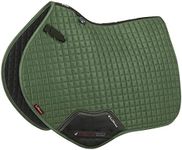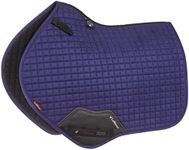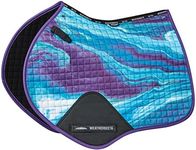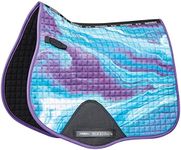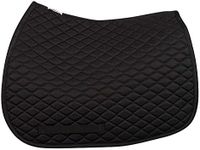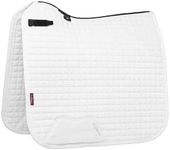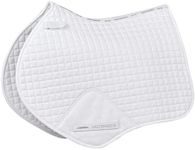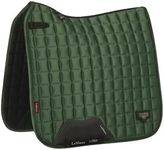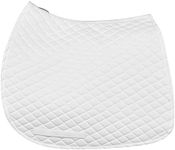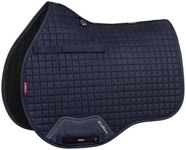Buying Guide for the Best Saddle Pads
Choosing the right saddle pad is essential for the comfort and performance of both the horse and the rider. A good saddle pad can help distribute the weight of the saddle evenly, prevent chafing, and absorb shock. When selecting a saddle pad, it's important to consider several key specifications to ensure you get the best fit for your needs. Here are the main factors to consider when choosing a saddle pad.MaterialThe material of the saddle pad is crucial as it affects comfort, durability, and breathability. Common materials include cotton, wool, and synthetic fabrics. Cotton is breathable and easy to clean, making it a good choice for everyday use. Wool is excellent for moisture-wicking and temperature regulation, ideal for long rides or hot climates. Synthetic materials often offer a balance of durability and ease of maintenance. Choose a material based on your riding frequency, climate, and the specific needs of your horse.
ThicknessThe thickness of a saddle pad can impact the level of cushioning and support it provides. Thicker pads offer more shock absorption, which can be beneficial for high-impact activities like jumping or long trail rides. However, they can also add bulk and may not fit well under all saddles. Thinner pads are lighter and less bulky, making them suitable for everyday riding or for horses that don't need extra cushioning. Consider the type of riding you do and your horse's comfort when choosing the thickness.
Shape and SizeSaddle pads come in various shapes and sizes to fit different types of saddles and horses. The shape should match the contour of your saddle to ensure a proper fit and prevent slipping. Common shapes include square, half, and contoured pads. The size should cover the area under the saddle without extending too far beyond it. Measure your saddle and horse to determine the appropriate size. A well-fitting pad will stay in place and provide even pressure distribution.
BreathabilityBreathability is important to keep your horse comfortable, especially during long rides or in hot weather. A breathable saddle pad allows air to circulate, reducing the risk of overheating and moisture buildup. Look for pads with moisture-wicking properties or those made from breathable materials like wool or certain synthetics. If your horse tends to sweat a lot, prioritizing breathability can help prevent skin irritations and keep your horse cooler.
MaintenanceThe ease of maintenance is another important factor to consider. Some saddle pads are machine washable, while others may require hand washing or special care. Cotton and synthetic pads are generally easier to clean and maintain, while wool pads may need more careful handling. Consider how much time and effort you are willing to invest in cleaning your saddle pad. A pad that is easy to maintain will last longer and stay in better condition.
Special FeaturesSome saddle pads come with special features like gel inserts, memory foam, or anti-slip surfaces. Gel inserts and memory foam can provide additional cushioning and support, which can be beneficial for horses with back issues or for high-impact activities. Anti-slip surfaces help keep the pad in place, reducing the risk of shifting during rides. Evaluate whether these features align with your horse's needs and your riding style to determine if they are worth the investment.
